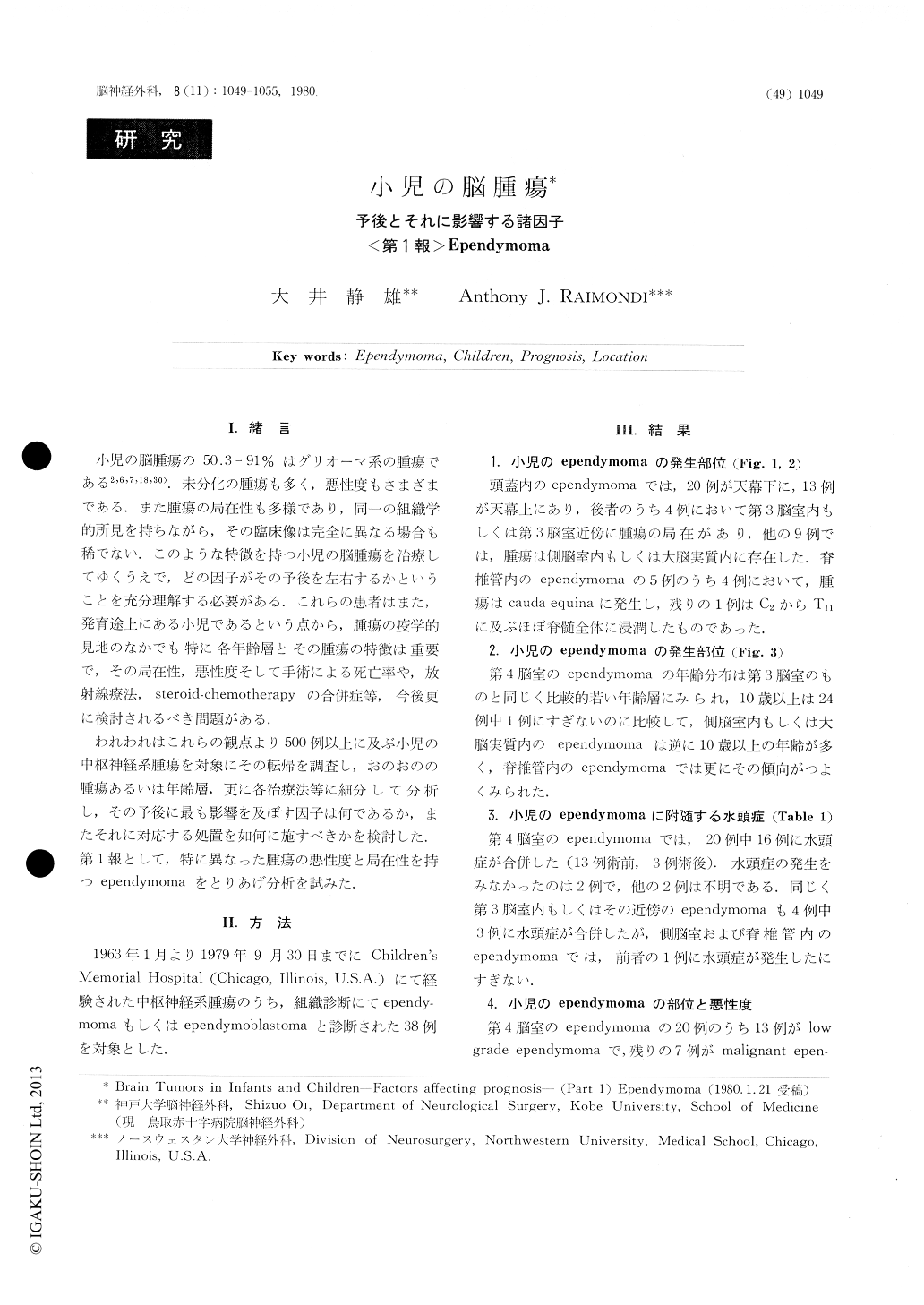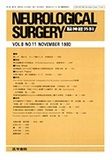Japanese
English
- 有料閲覧
- Abstract 文献概要
- 1ページ目 Look Inside
I.緒言
小児の脳腫瘍の50.3-91%はグリオーマ系の腫瘍である2,6,7,18,30).未分化の腫瘍も多く,悪性度もさまざまである,また腫瘍の局在性も多様であり,同一の組織学的所見を持ちながら,その臨床像は完全に異なる場合も稀でない.このような特徴を持つ小児の脳腫瘍を治療してゆくうえで,どの因子がその予後を左右するかということを充分理解する必要がある.これらの患者はまた,発育途上にある小児であるという点から,腫瘍の疫学的見地のなかでも特に各年齢層とその腫瘍の特徴は重要で,その局在性,悪性度そして手術による死亡率や,放射線療法,steroid-chemotherapyの合併症等,今後更に検討されるべき問題がある.
われわれはこれらの観点より500例以上に及ぶ小児の中枢神経系腫瘍を対象にその転帰を調査し,おのおのの腫瘍あるいは年齢層,更に各治療法等に細分して分析し,その予後に最も影響を及ぼす因子は何であるか,またそれに対応する処置を如何に施すべきかを検討した.第1報として,特に異なった腫瘍の悪性度と局在性を持つependymomaをとりあげ分析を試みた.
Ependymomas constitute 6.1 to 12.7 percent of pediatric intracranial neoplasms with a predominance of male patients, younger children and infratentrial involvement. Although there is a generally accepted pathological classification of ependymoma, the prognosis and surgical results of this tumor do not always correlate with the apparant tumor malignancy.
We analyzed 38 ependymomas in children in light of the prognosis and its affecting factors. Thirty-three were intracranial and 5 were intraspinal.

Copyright © 1980, Igaku-Shoin Ltd. All rights reserved.


